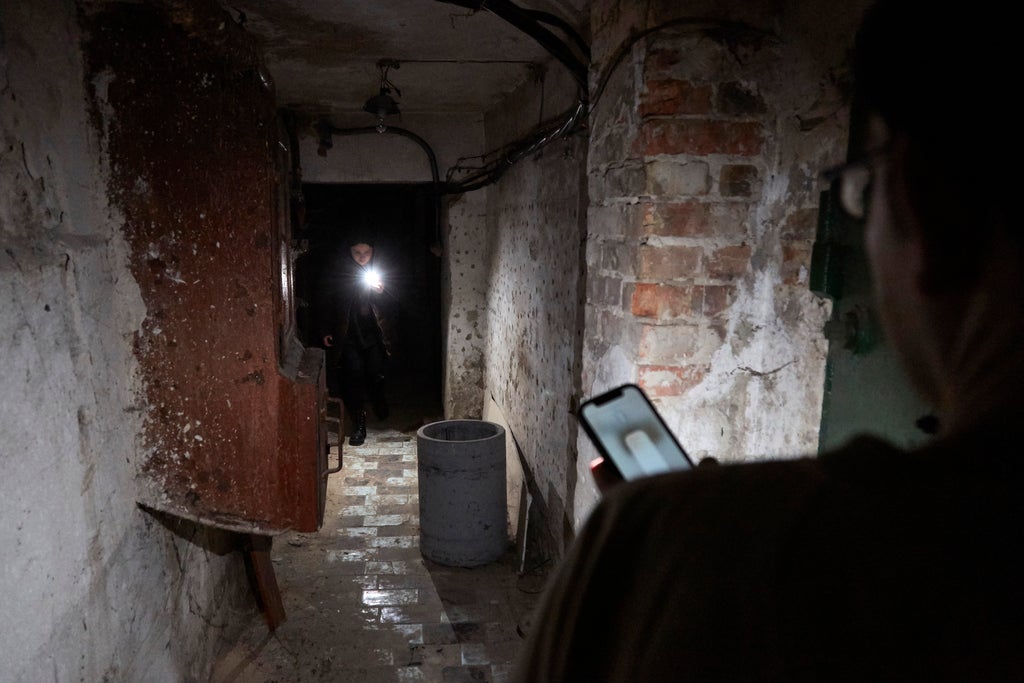
“I am scared,” Oksana Pokalchuk, the director of Amnesty International Ukraine, says. “Everyone here is scared. We didn’t expect the attack to be so big. We thought conflict might arise in the eastern part of Ukraine. Not all the territories.”
Speaking from a bomb shelter in the Ukrainian capital of Kyiv, the campaigner told The Independent she feels she is safe but some of her colleagues have been unable to find shelters to take refuge in.
Ms Pokalchuk, who has worked for the leading human rights organisation for five years, warned this is because some of the shelters are in poor condition and do not look safe enough to enter.
“Kyiv City authorities say we need to use shelters but not all shelters are accessible,” Ms Pokalchuk, who previously worked as a lawyer at the European Court of Human Rights, adds. “Some of our Amnesty International colleagues can’t find a shelter. The shelters near their homes are not in proper condition. They do not look properly prepared.”
She said the biggest problem with the shelters which appear unusable is the fact their entrances look dangerous and inaccessible. “The shelters do not look safe. If airstrikes happen, it looks like they will fall down,” Ms Pokalchuk added.
Her comments come after dozens of people have died after Russia shocked the world by launching an attack on Ukraine under the orders of President Vladimir Putin. Leaders around the world have warned Russia’s “full-scale invasion” could lead to the largest war Europe has seen since 1945.
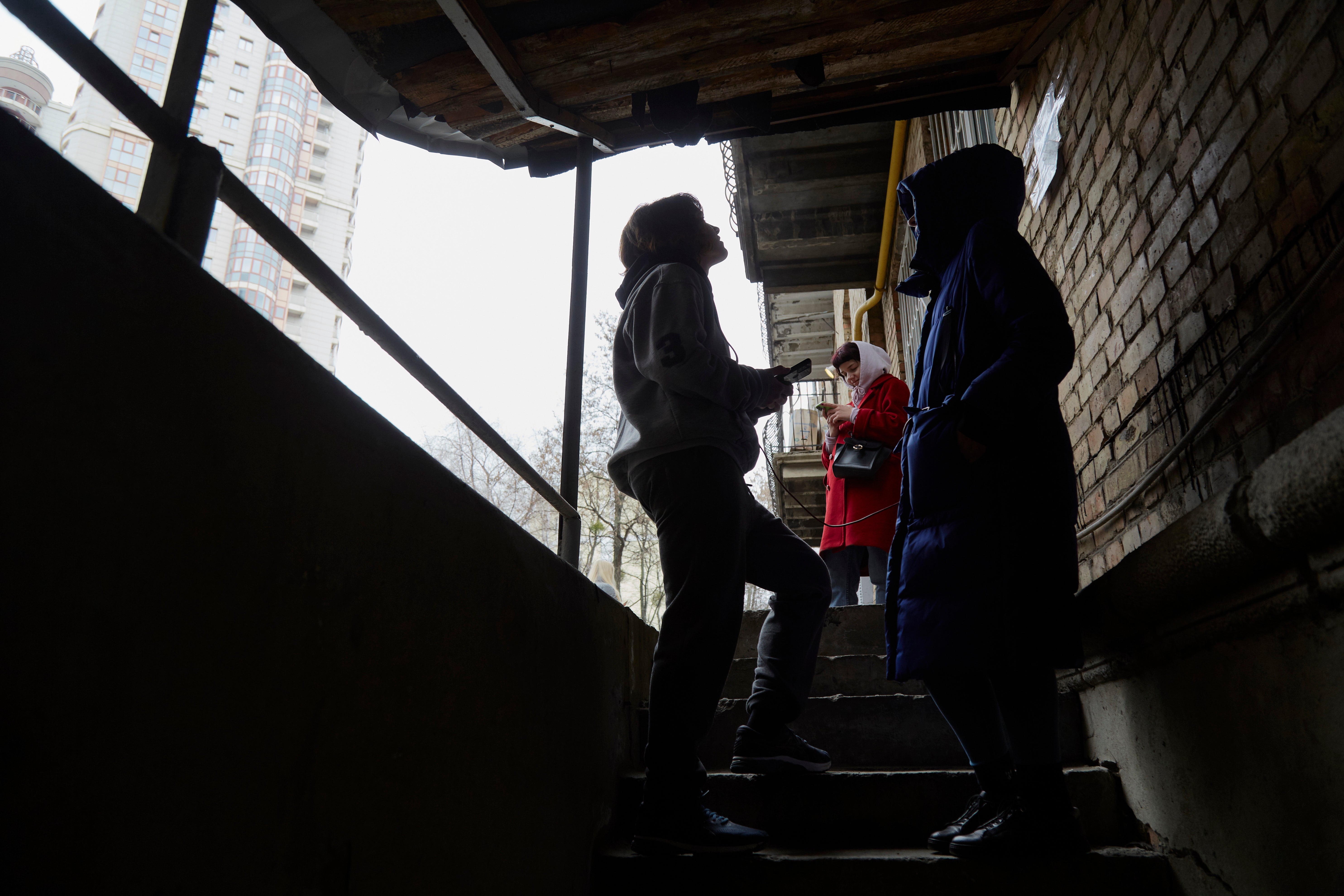
President Putin threatened the international community with “consequences greater than any you have faced in history” if they attempt to obstruct his invasion into Ukraine. Civilians in Kyiv, Kharkiv and Odesa, two other key Ukrainian cities, heard explosions booming overhead at around 5am – just minutes after Putin’s televised speech announcing the attack.
Ms Pokalchuk was one of those who heard the bombs. “A lot of rockets are flying over Ukraine,” she says. “We heard an explosion that was a big boom in Kyiv a few hours ago. Immediately I went to a shelter.”
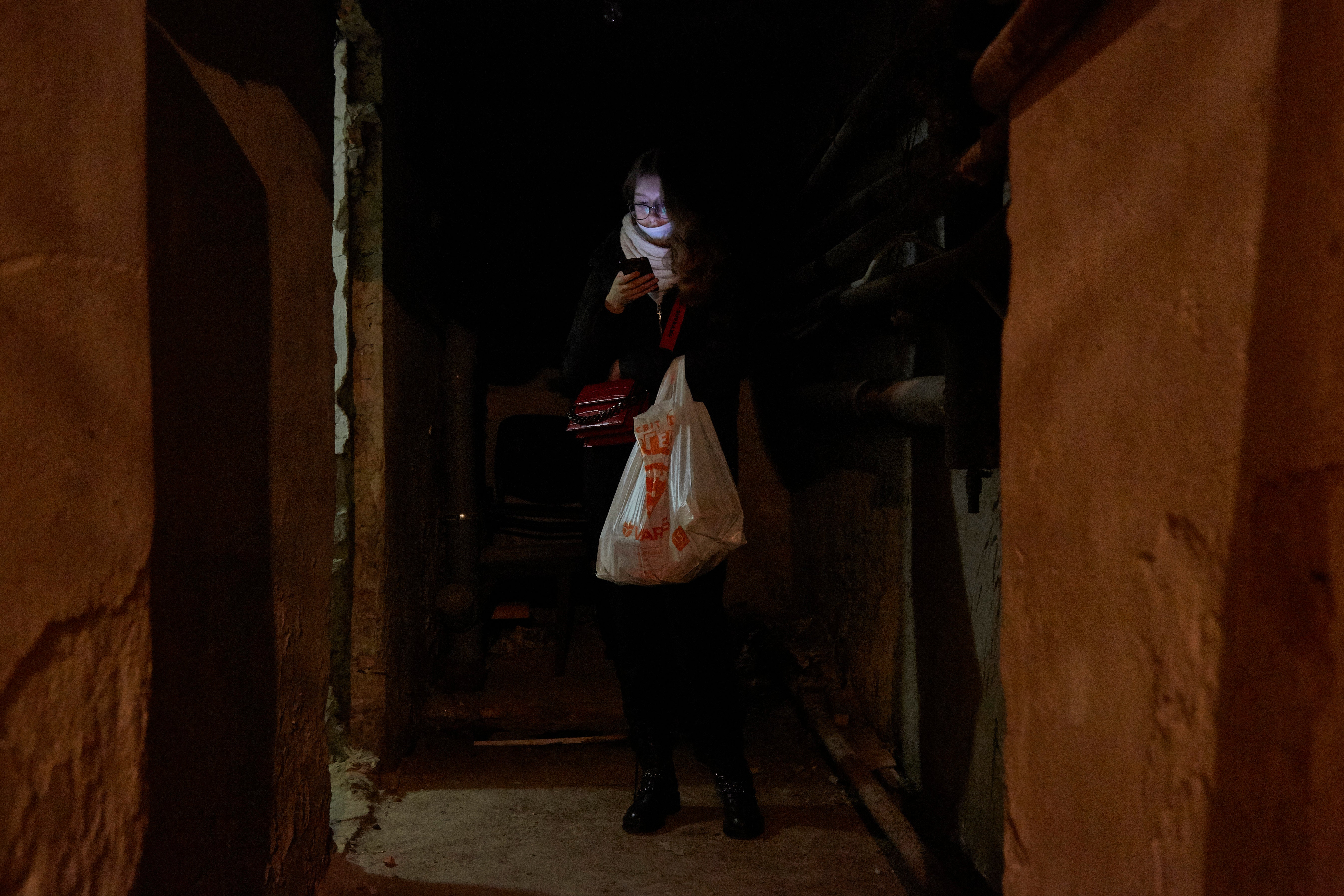
She raised fears for the safety of older people or those with disabilities as she warned many are physically unable to make the trip to a bomb shelter to seek safety. “They are just locked in their homes,” Ms Oksana Pokalchuk adds. “It is impossible for them to go to a shelter - even a shelter near their home.”
The authorities in Kyiv have released a map of 4,500 bomb shelters, which includes everything from metro stations, which were first designed to survive a nuclear strike, to shops, bars, pedestrian underpasses, as well as a strip club.
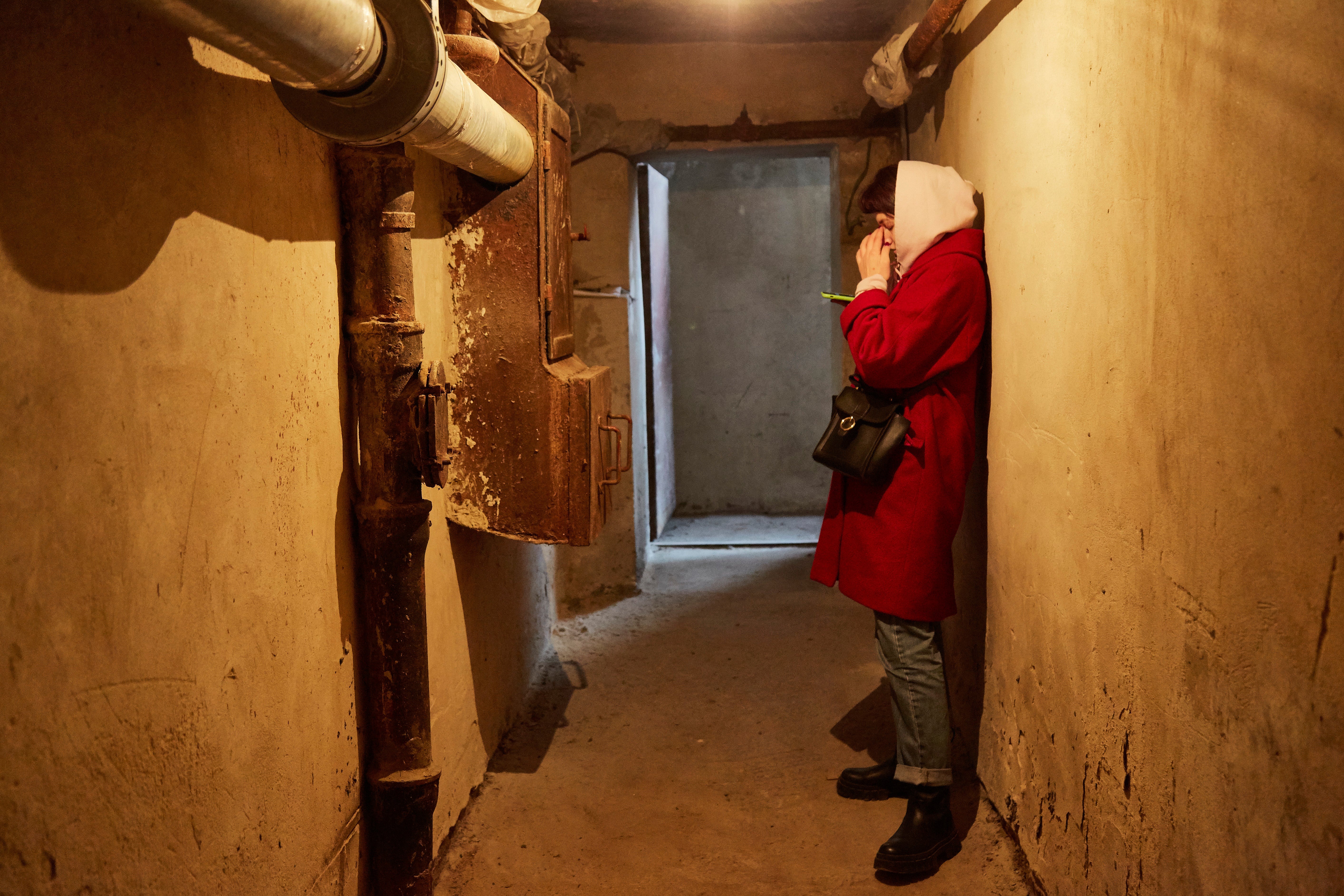
While this is a substantial increase from the list of 1,500 bomb shelters the authorities released just a few years ago, in recent weeks fears have been raised by local press that some of the shelters are not fit for use.
A news story by The Kyiv Independent published in early February describes a “clearly abandoned” shelter with “a dark corridor with dirt floors, rusty walls, and crumbling ceilings”.
“It was not in the state to house many residents for an extended period, which was said according to Kyiv’s official shelter map,” states the article.
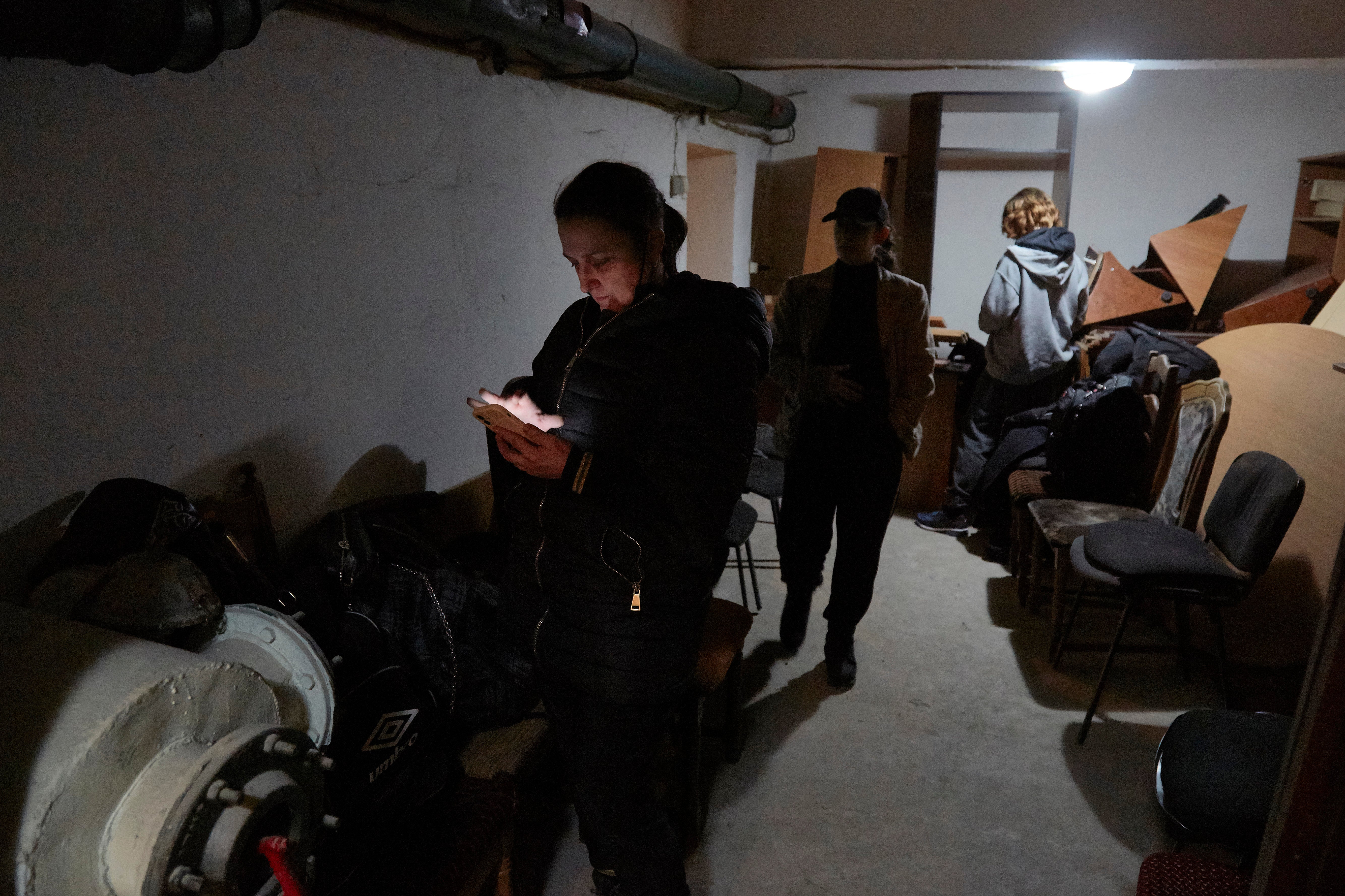
While many of Ukraine’s bomb shelters were built in the Cold War, the authorities have recently sought to revive the shelters in preparation for the possibility of Russia attacking. Directions to underground shelters, painted with stencils, sprung up around Kyiv after Russia annexed Crimea in 2014.
You know rockets are coming but we don’t know from which side. People are very scared. All the roads are full of cars and traffic jams.
Turning her attention to Russia’s attack on Ukraine, Ms Pokalchuk says Ukraine’s citizens have been left profoundly shaken. “We are disappointed,” she adds. “We were evacuated from Kyiv a couple of hours ago. We expect there will be another airstrike soon. Everyone has to be in the shelter. You know rockets are coming but we don’t know from which side. People are very scared. All the roads are full of cars and traffic jams. Planes are flying all the time - you can hear it. But airports are closed. It is very unsafe.”







